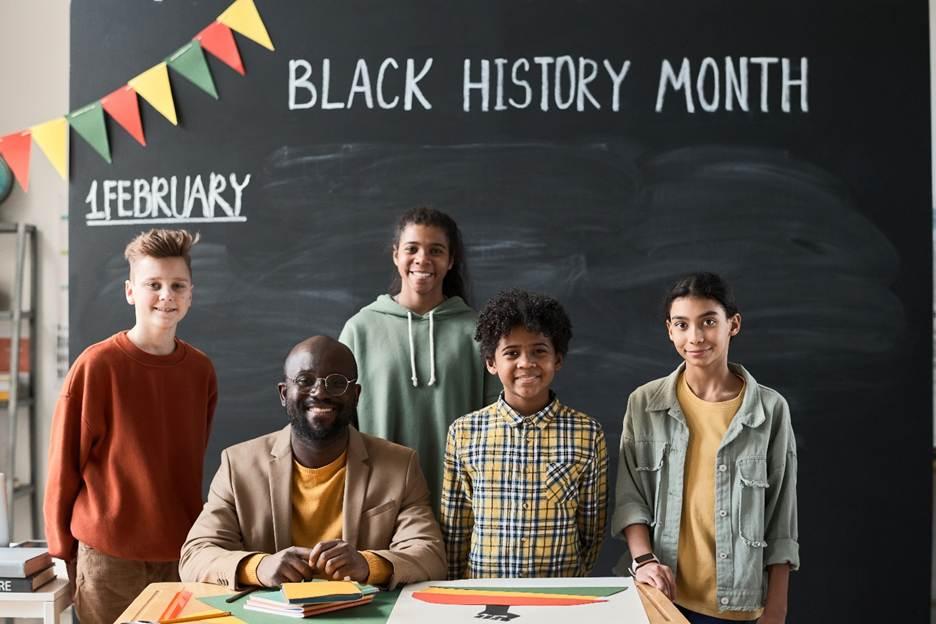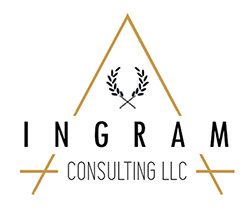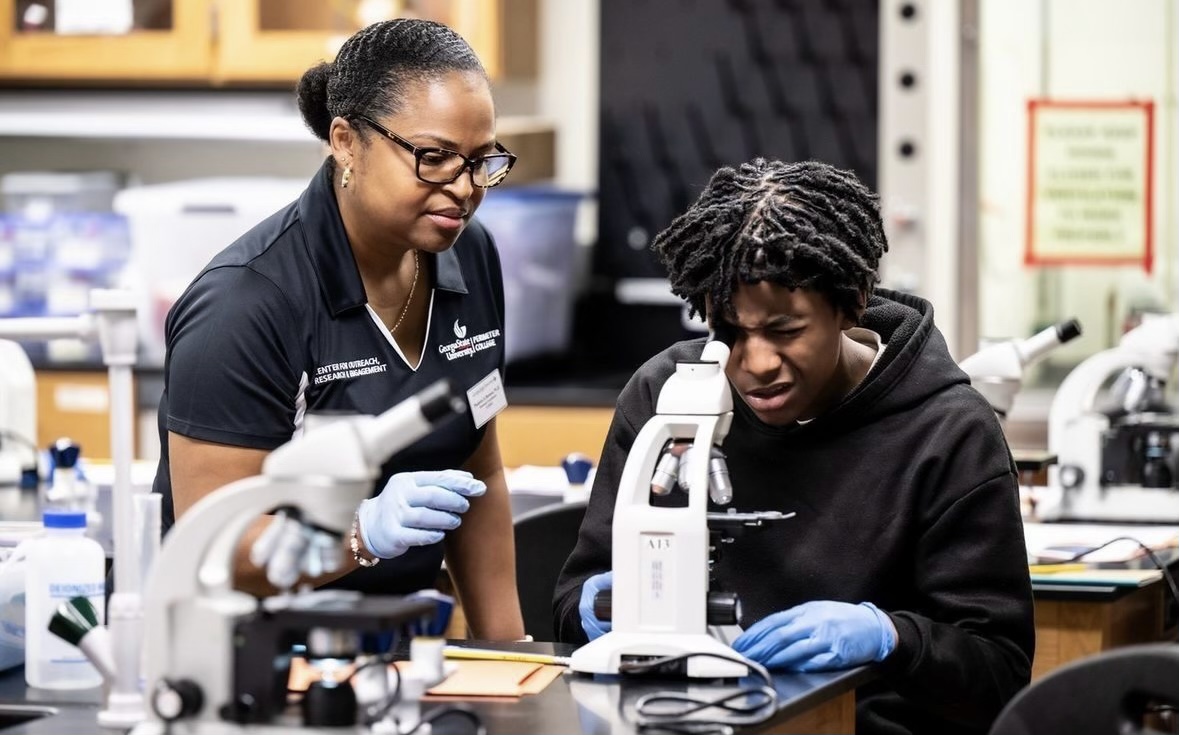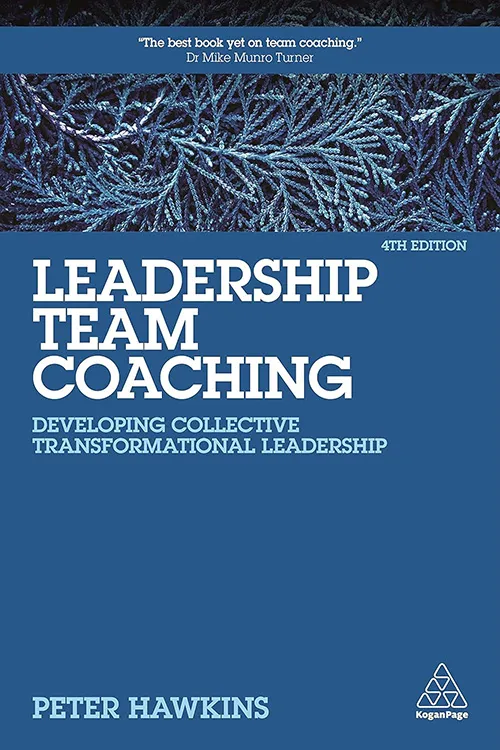Black History Month: Honoring Legacy, Ancestry, and Excellence in 2025
 Every February, Black History Month serves as a powerful reminder of the resilience, brilliance, and contributions of Black individuals throughout history. It is more than a moment of reflection—it is a time to celebrate the deep ancestral connections that bind Black communities across generations, from food and faith to shared spaces of gathering. It is also a moment to recognize Black excellence in every arena, including sports, arts, and education, as well as to confront challenges that persist in society.
Every February, Black History Month serves as a powerful reminder of the resilience, brilliance, and contributions of Black individuals throughout history. It is more than a moment of reflection—it is a time to celebrate the deep ancestral connections that bind Black communities across generations, from food and faith to shared spaces of gathering. It is also a moment to recognize Black excellence in every arena, including sports, arts, and education, as well as to confront challenges that persist in society.
Ancestral Connections: The Roots of Community
For Black communities, history lives not only in textbooks but also in traditions passed down through generations. Food, for instance, is a sacred bridge to ancestry—recipes like gumbo, collard greens, jambalaya, and black-eyed peas tell stories of survival and adaptation, influenced by West African, Caribbean, and Southern cultures. Worship remains a cornerstone of resilience, with Black churches historically serving as both spiritual and social hubs that fueled movements for justice. Likewise, the act of coming together—whether in barbershops, beauty salons, or family reunions—reinforces the communal spirit that has been vital to Black endurance and joy.
Super Bowl LIX: A Testament to Black Excellence
This year’s Super Bowl LIX carried deep historical weight, as it featured two Black quarterbacks leading their teams—an achievement that echoed the groundbreaking victory of Doug Williams in 1988, the first Black quarterback to win a Super Bowl. Williams’ triumph shattered myths about Black athletes’ ability to lead at the highest levels. Now, with stars like Jalen Hurts, Patrick Mahomes, and Lamar Jackson taking center stage, the legacy continues, proving that Black excellence is not only present but dominant in the NFL.
However, the game was not without controversy. Kendrick Lamar, a Pulitzer Prize-winning artist known for his unapologetic commentary on race and society, performed at the halftime show. While some appreciated the performance steeped in Black pride and social consciousness, others—particularly conservative voices—criticized the NFL for embracing artists who challenge mainstream narratives. The discourse surrounding his performance highlights the ongoing struggle for Black expression in historically exclusive spaces.
In society, Black History Month is a call to action. It urges institutions to not only recognize past injustices but also to commit to policies that promote fairness, inclusiveness and access, whether in hiring practices, media representation, or criminal justice reform. The month serves as both a celebration and a challenge: to honor Black history authentically and to ensure that its lessons inform a more just and inclusive future for all.
As we commemorate Black History Month in 2025, we are reminded that Black history is American history—alive in every meal shared, every song sung, every milestone achieved, and every barrier broken. And in the recent words of a dear friend, Harriet Sanford, “Black is me celebrating my excellence every day. No month or permission needed. No one can take it away!”

 Public education in the United States is undergoing significant shifts as the White House enacts policies affecting students, educators, and institutions. Three key areas of concern include actions related to birthright citizenship, the freezing of federal grants and loans, and bans on Diversity, Equity, and Inclusion (DEI) initiatives. These measures have sparked debate over their long-term impact on educational access, funding, and inclusivity.
Public education in the United States is undergoing significant shifts as the White House enacts policies affecting students, educators, and institutions. Three key areas of concern include actions related to birthright citizenship, the freezing of federal grants and loans, and bans on Diversity, Equity, and Inclusion (DEI) initiatives. These measures have sparked debate over their long-term impact on educational access, funding, and inclusivity. As the season of Thanksgiving unfolds, we are reminded of the profound significance of gratitude. This holiday marks the start of a season filled with reflection, celebration, and a time for coming together. For those of us in education, it is a unique opportunity to pause, honor the hard work of our colleagues, and prepare ourselves for the road ahead.
As the season of Thanksgiving unfolds, we are reminded of the profound significance of gratitude. This holiday marks the start of a season filled with reflection, celebration, and a time for coming together. For those of us in education, it is a unique opportunity to pause, honor the hard work of our colleagues, and prepare ourselves for the road ahead. Voting is the cornerstone of our democracy and a critical tool for shaping the future of public education, with the power to directly influence policies that affect school budgets, teacher staffing, school safety, book bans, and the selection of locally elected school boards. For public school educators, parents, and community members, casting a vote is one of the most important responsibilities we have to ensure that public schools remain strong, well-funded, and safe learning environments for all students.
Voting is the cornerstone of our democracy and a critical tool for shaping the future of public education, with the power to directly influence policies that affect school budgets, teacher staffing, school safety, book bans, and the selection of locally elected school boards. For public school educators, parents, and community members, casting a vote is one of the most important responsibilities we have to ensure that public schools remain strong, well-funded, and safe learning environments for all students. Jim Huge, passed away on September 1, 2024, at the age of 84. His remarkable life began in Deshler, Nebraska, where he grew up as one of three energetic brothers. Jim excelled in both sports and academics, playing football and basketball at the University of Nebraska, where he was honored as an Academic All-American in 1962. His dedication to his teammates is said to have been unwavering, despite enduring numerous injuries, he formed lifelong bonds during this time, particularly with his Phi Kappa Psi fraternity brothers.
Jim Huge, passed away on September 1, 2024, at the age of 84. His remarkable life began in Deshler, Nebraska, where he grew up as one of three energetic brothers. Jim excelled in both sports and academics, playing football and basketball at the University of Nebraska, where he was honored as an Academic All-American in 1962. His dedication to his teammates is said to have been unwavering, despite enduring numerous injuries, he formed lifelong bonds during this time, particularly with his Phi Kappa Psi fraternity brothers. As the school year begins anew, the air is filled with the familiar mix of excitement and anticipation. Students are ready to embark on a new academic journey, and parents are eager to see their children grow and learn. However, none of this would be possible without the dedication and hard work of our public school teachers and school system leaders.
As the school year begins anew, the air is filled with the familiar mix of excitement and anticipation. Students are ready to embark on a new academic journey, and parents are eager to see their children grow and learn. However, none of this would be possible without the dedication and hard work of our public school teachers and school system leaders. The 2024 Paris Olympics were more than just a celebration of athletic excellence; they were a global showcase of the human spirit’s resilience, determination, and the power of aspirational goals. As the world watched, the athletes demonstrated that achieving greatness requires more than just talent—it demands perseverance, hard work, a healthy competitive spirit, and a deep sense of national pride.
The 2024 Paris Olympics were more than just a celebration of athletic excellence; they were a global showcase of the human spirit’s resilience, determination, and the power of aspirational goals. As the world watched, the athletes demonstrated that achieving greatness requires more than just talent—it demands perseverance, hard work, a healthy competitive spirit, and a deep sense of national pride.
 On July 5, 1852, Frederick Douglass delivered one of the most powerful and thought-provoking speeches in American history. Invited to speak at an Independence Day celebration, Douglass used the occasion to highlight the stark contrast between the ideals of liberty and the harsh reality of slavery. His speech, “What to the Slave is the Fourth of July?” serves as a timeless reminder of the ongoing struggle for justice and equality, and it offers profound lessons for today’s school system leaders.
On July 5, 1852, Frederick Douglass delivered one of the most powerful and thought-provoking speeches in American history. Invited to speak at an Independence Day celebration, Douglass used the occasion to highlight the stark contrast between the ideals of liberty and the harsh reality of slavery. His speech, “What to the Slave is the Fourth of July?” serves as a timeless reminder of the ongoing struggle for justice and equality, and it offers profound lessons for today’s school system leaders. Peter Hawkins’ book “Leadership Team Coaching: Developing Collective Transformational Leadership” is a seminal work that explores the dynamics of team leadership and the transformative power of coaching in developing high-performing teams. Hawkins delves into the intricacies of leadership teams, offering a comprehensive guide for leaders, coaches, and organizations striving to enhance their team effectiveness. The book is structured around key principles and methodologies that facilitate effective team coaching.
Peter Hawkins’ book “Leadership Team Coaching: Developing Collective Transformational Leadership” is a seminal work that explores the dynamics of team leadership and the transformative power of coaching in developing high-performing teams. Hawkins delves into the intricacies of leadership teams, offering a comprehensive guide for leaders, coaches, and organizations striving to enhance their team effectiveness. The book is structured around key principles and methodologies that facilitate effective team coaching.